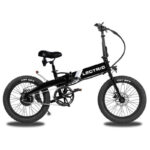Dirt bikes are purpose-built machines, designed to conquer off-road trails and race tracks. They’re known for their agility, powerful engines, and robust suspension, but are they ever legal to ride on public roads? The question of making a Dirt Bike Street Legal is a common one for enthusiasts looking to expand their riding options. While dirt bikes and pit bikes share similarities, especially in their off-road DNA, their intended use and construction differ significantly, impacting their street legal potential.
Pit bikes, for instance, are often seen as smaller, more budget-friendly versions of dirt bikes, primarily intended for navigating racing pits or for casual riding on private land. They’re typically built with less robust components compared to dirt bikes designed for rigorous trail riding and jumps. This difference in construction is crucial when considering street legality. Pit bikes are often a cheap way to get around, but their basic design usually isn’t geared towards road-legal modifications right out of the factory.
To further complicate things, understanding what differentiates a dirt bike or pit bike from a moped is also essential. Mopeds are low-powered, road-oriented two-wheeled vehicles, strictly defined by engine size and speed limits.
Pit Bike or Moped? Clearing Up the Confusion
Mopeds are definitely not motorcycles, despite sharing engines and two wheels. The similarities largely end there. State regulations define a moped based on very specific criteria:
- Engine size typically not exceeding 50cc.
- Power output capped, often around three brake horsepower.
- Maximum speed limited to approximately 30mph on level ground.
These limitations make mopeds suitable for very specific, often urban, environments. However, a pit bike, and certainly a dirt bike, easily surpasses these specifications. Pit bikes are unequivocally motorcycles. They are built to exceed 30mph and utilize transmissions, unlike the single-speed operation of mopeds. Therefore, classifying a pit bike, or a dirt bike, as a moped is inaccurate.
When considering making a dirt bike or pit bike street legal, it’s crucial to understand that you’re dealing with a motorcycle, and all standard traffic laws and motorcycle equipment regulations will apply in your jurisdiction. This distinction is vital when navigating the legal process.
The Challenge of Titling a Dirt Bike for Street Use
The main hurdle in making a dirt bike street legal isn’t usually about adding the necessary equipment like lights, mirrors, and turn signals. The real challenge lies in registering and titling a motorcycle that the manufacturer originally designed for off-highway vehicle (OHV) use. State Departments of Motor Vehicles (DMV) often scrutinize vehicles not originally intended for road use, especially in states with stringent emissions standards or vehicle inspections.
Despite these potential bureaucratic roadblocks, the appeal of making a dirt bike street legal is clear. Dirt bikes are exciting, stylish, and can be a cost-effective way to own a motorcycle.
One significant issue that can arise is a state DMV mistakenly classifying a pit bike, or even a modified dirt bike, as a moped or scooter during the registration process. This misclassification can create legal problems. If your vehicle is titled as a moped and you are caught exceeding the 30mph moped speed limit, you, the rider, will be held responsible, not the DMV. Furthermore, moped licenses often differ from motorcycle licenses, with motorcycle endorsements typically not required for mopeds.
Therefore, if your goal is to legally ride your dirt bike or pit bike on the street as a motorcycle, it is crucial to ensure it is correctly classified and titled as a motorcycle by your state. Accepting a moped classification will lead to legal complications and restrict the bike’s intended performance and usage.

